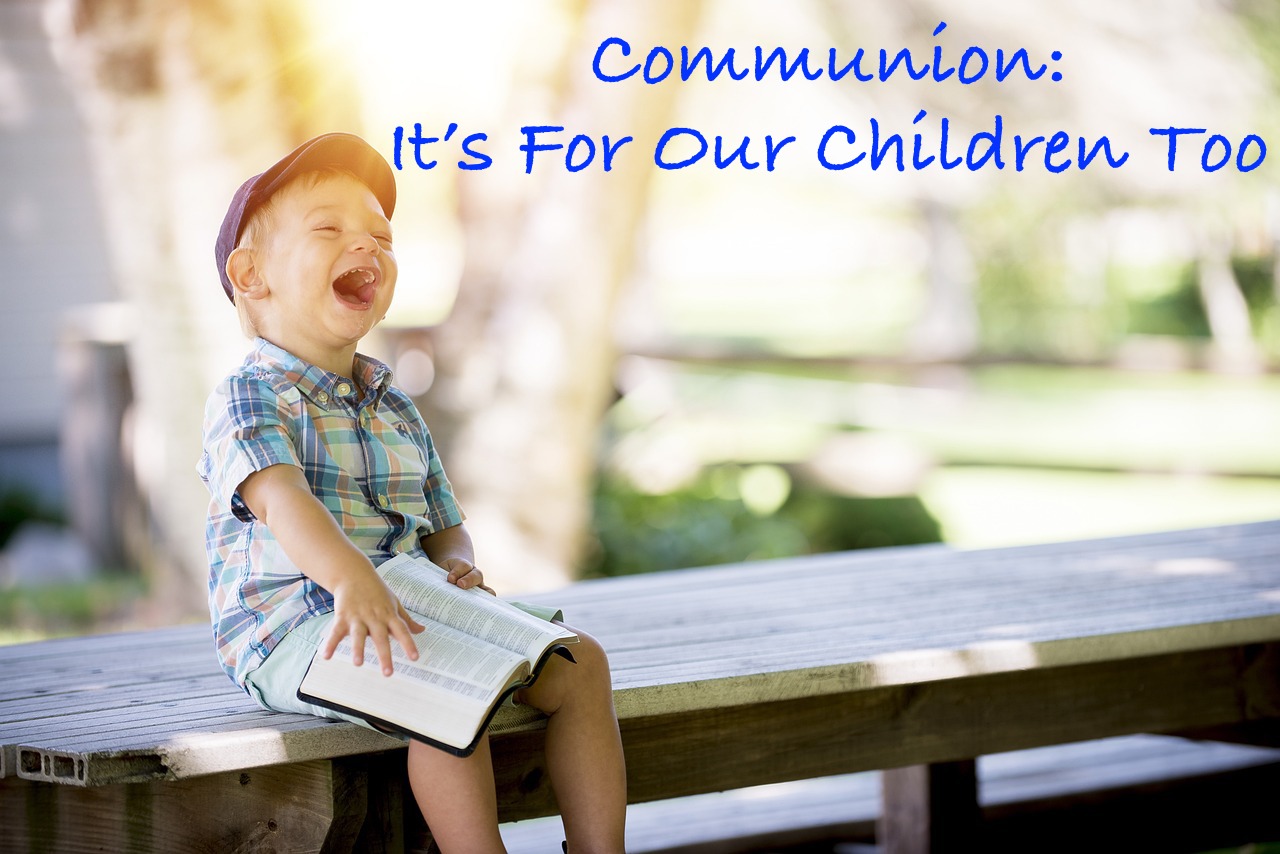Once upon a time, God created a man and a woman and put them in a garden. In the middle of this garden were two trees: the Tree of Life and the Tree of the Knowledge of Good and Evil. From the latter, they were forbidden to eat. From the former, God welcomed them to eat. The man and woman would meet God at the trees, and God would give them the fruit of the Tree of Life and, through it, share his life with them.
God blessed the man and the woman at their creation and told them to be fruitful and multiply. In their original state of righteousness, the children born would be sinless, just like their parents. They would come to the sanctuary-garden with their parents, meet with God, and receive the fruit of the Tree of Life with them when they were able to eat solid food. As man multiplied in this state, he would be truly fruitful; his children would be faithful worshipers and have access to God’s sanctuary-garden and food.
The man and woman disobeyed God and ate from the forbidden tree, listening to the serpent’s word instead of God’s word. This not only affected them but their children. Being corrupted by sin, the seed of the man and woman would be conceived in sin (Ps 51:5) and, therefore, cut off from the sanctuary-garden and God’s food. Sin distorted everything. Enmity now existed between the man, woman, and God.
God came to the man and woman in his grace and put them back on his original track for them. They would suffer severe consequences, but God did not abandon his original plan. Where sin abounded, grace did much more abound. The man would continue to work the ground, and the ground would yield its fruit. Thorns and thistles would fight the man as he labored arduously, but he would be the successful farmer God created him to be. The woman would still have children even though pain would accompany childbirth. The serpent was irredeemable. He and his seed would be at war with God’s faithful people. There would be two types of humans: God’s children and the serpent’s children.
God marked his children off from the serpent’s children through certain signs. These signs told the world that God had made a special covenant with them; that is, these people were in a special relationship with God and would have access to him and the food he provided for life. Man was cut off from the original Tree of Life, but God still provided food for life, and his people enjoyed the privilege of that food.
Since God didn’t give up on his original plan that included the man and woman being fruitful and multiplying, when he restored the man and woman to peace with him, he also made promises concerning their children. The children of God’s faithful people, whether one parent or both, would be holy from before birth (1 Cor 7:14). Being holy means having access to the sanctuary, which literally means “holy place.” That access meant they had access to the holy food God prepared for his people. God granted access by virtue of his declaration, not an intellectual or verbal exercise accomplished by the child.
Throughout history, God marks his children out through signs such as baptism (1 Cor 10:1-4) and, for the males who had a special mission, circumcision (Gen 17:1ff). God promised to be a God to believers and their children. They would be in the same covenant with equal access despite being at different maturity levels.
God welcomed children to eat the food he provided. When Moses confronted Pharaoh with God’s command to let his people go so that they could go into the wilderness for a worship feast, Moses refused the offer to leave the little children behind because they were to participate in the feast (see Ex 10:1-11). Eventually, they did participate in a worship feast on the night of the Passover. Every eating mouth, the Scripture says, ate the food of the Passover (Ex 12:4). This became the practice at every worship feast (see Deut 16:11, 14).
When the children of Israel were in the wilderness, God provided manna from heaven and water from the Rock. These were not merely given to provide nutrients to keep the body’s mechanics going (though God did provide nourishment through them). The manna and water were God’s “Tree of Life” food, sacramental food. When speaking to the Corinthians about not taking the Lord’s Supper wrongly, Paul tells them the manna and the water were types and shadows of the Lord’s Supper. The Corinthians should learn how God deals with people who eat and drink unworthily. The manna and the water were “spiritual food,” food given by the Spirit. The water was from the Rock, and the Rock was Christ (1 Cor 10:4).
When the children of Israel gathered manna, they were to do so for every mouth that ate in the house (Ex 16:16, 18, 21). Children were included. They ate spiritual food and drank from the Rock, which was Christ. The children of God’s people are holy and have access to God’s food.
Nothing has changed with regard to the access of children to God’s food. This was God’s plan all along. Our children are holy (1 Cor 7:14), saints (cp. Eph 1:1 & 6:1), with all the privileges and responsibilities that come with that. Children are members of the church, and the church is “one loaf” because we all eat of the one loaf (1 Cor 10:17). The Supper is one of the visible marks that makes a distinction between God’s children and the serpent’s children. Since children are part of God’s holy family, they have access to the holy food.
Communion. It’s for our children, too.
Image by StockSnap from Pixabay













